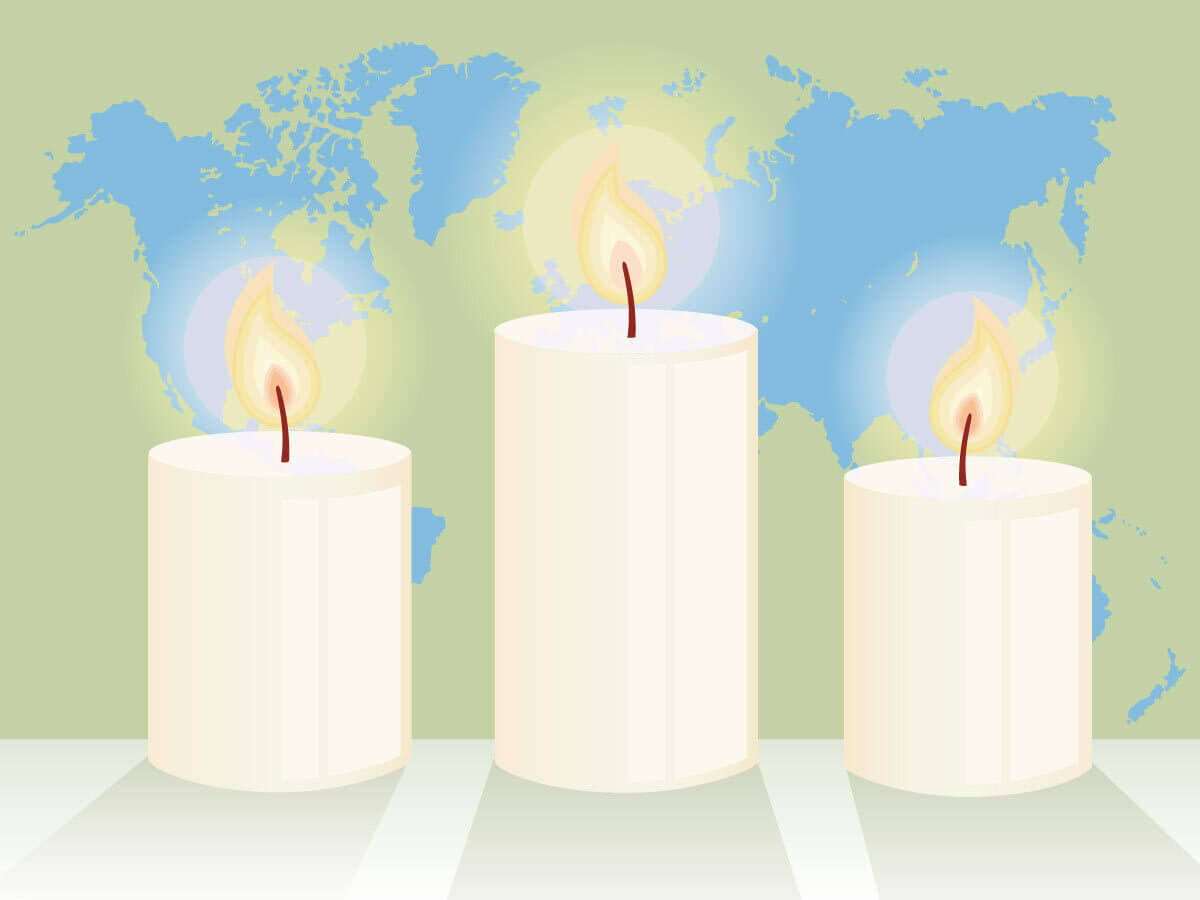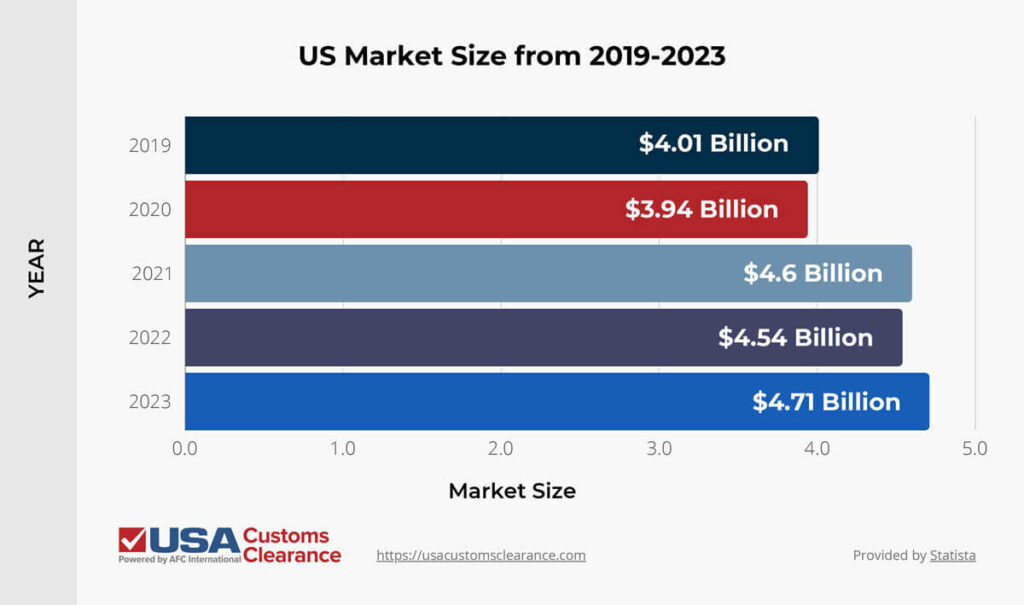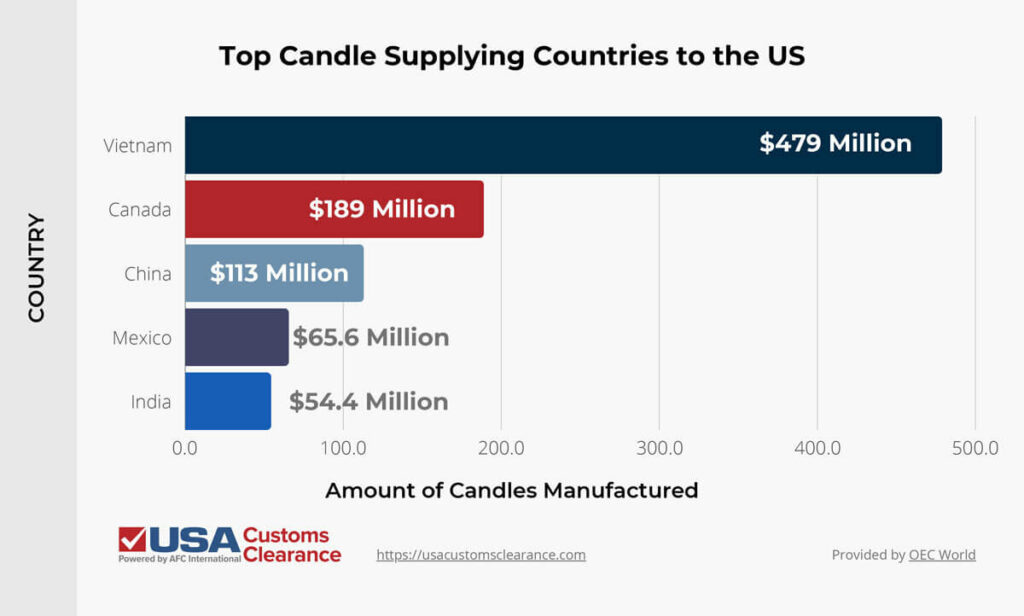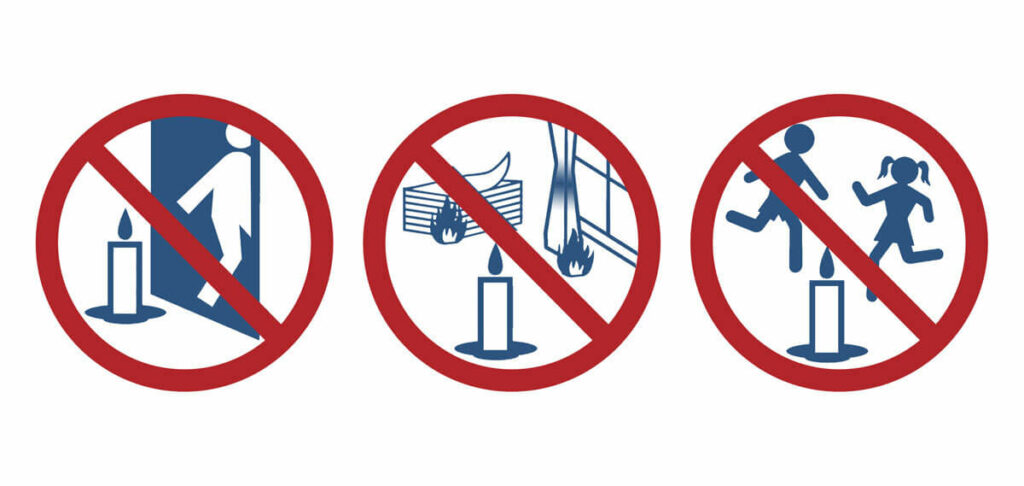
A lit candle can bring a fresh scent to a room, create an intimate ambiance, or simply add light to a dark space. Today, importing candles from around the globe of all shapes, sizes, and scents is a multi-million-dollar industry. Before you start importing these products, you’ll need to get familiar with all applicable requirements.
Key takeaways:
I’ll guide you through the requirements you’ll need to complete to get your candles into the country.
According to the National Candle Association, candles rack up more than $13 billion in sales annually. Candles are not just for the top of birthday cakes or to mark other significant milestones; today they are thoughtful housewarming gifts, birthday presents and even a random thank-you gesture.
Pair the right fragrance with a space and candles can work magic to transform the setting. To help you better visualize the size of the U.S. candle market, I’ve provided some data on its growth over the past five years.

There are many types of candles that consumers in the U.S. use, from utilitarian ones designed for emergencies to various decorative types Today’s trends include popular seasonal scented candles like pumpkin spice or eucalyptus mint to name a few.
Even celebrities and pop-culture are getting into the candle game, with scents inspired by popular musicians, or from fictional characters from the latest bingeworthy series. Starting prices range from under $5 for a basic scent, to upwards of $25 for more exotic aromas in larger sizes.
It should not be a surprise that the United States is the world’s largest importer of candles. In fact, since candles are seen more as décor or gifts, the market has exploded to keep desired scents and sizes on the store shelves.
While candles are made in the U.S., many are also imported from other countries. If you’re not sure where to source from, consider looking at the top countries the U.S. imported candles from in 2022.

Each of these countries can provide quality candle products. If you import your candles from Canada or Mexico, you’ll be able to enjoy preferential tariff treatment under the United States-Mexico-Canada (USMCA) agreement.
In some cases, businesses turn to product sourcing options such as Alibaba to keep items in the supply chain. The goal of Alibaba, based in China, is to sell wholesale products in bulk to U.S. companies. In addition to Alibaba, there are other similar sourcing alternatives including IndiaMart and DHGate to name a few.
Regardless of where candles are imported from, a knowledgeable Licensed Customs Broker can help steer shippers in the right direction without losing time or money. You can obtain this assistance from one of our professionals during a consulting session.
Related: Importing Incense Sticks

Our expert consultants get your shipments where they need to go. Let us show you how it’s done!
Unlike other products, the regulations placed on candle imports aren’t as extreme. Nonetheless, there are some essential regulations that you’ll have to follow. In the following sections, I’ve laid out the expectations of different federal agencies that must be satisfied.
Customs and Border Protection (CBP) is the primary agency that collects all essential documentation for imports.
Generally, goods with a value of $2,500 or have additional agency oversight must have a customs bond when they enter the country. You can either obtain a single-entry or continuous bond. Single entries are good for one import, while a continuous variant can be used for any number of imports for an entire year.
Here’s a checklist of the other basic documents needed:
In addition, more information is requested based on the country of origin and other factors. Candle shippers will need to work closely with a customs broker to avoid any problems and to make sure all the information is accurate.
Related: Documents for Import and Export
The Consumer Product Safety Commission (CPSC) doesn’t directly regulate the importation of candles into the country. That said, they have many health standards that you should follow.
First and foremost, the CPSC forbids the importation of lead core wicks. These types of candles were banned in 2003 due to the hazard they pose to the health of children.
The CPSC also participates in the voluntary candle safety standards set by the American Society for Testing and Materials (ASTM). While following these standards isn’t mandatory, many importers still choose to purchase candles that abide by ASTM because it guarantees they’ll receive quality goods.
ASTM candle standards include:
ASTM F-2058 allows for text-only or text-and-pictogram labels. In either case, your candle imports should have a label that lists the three key rules for candle fire-safety.
These are:
If you’re using a text-and-pictogram label, you’ll need to include three pictograms that correspond with each of the key rules.

ASTM F-2179 sets scratch test and temperature specification when cooling glass containers that are meant to hold candles. It also establishes shock differential requirements for these items.
ASTM F-2417 is probably the most important of the standards. It discerns the maximum flame height and tip-over limits for candles. The tip-over limit refers to the angle a candle can be tilted before it falls over. I’ve provided the measurements for flame height and the angle at which candles can tilt.
ASTM F-2417 also prohibits secondary ignition, which is a self-sustained flame other than the one on the intended wick. The requirements in ASTM F-2601 sets minimum safety requirements for candle accessories. It focuses on the stability of items used to hold candles while they burn.
This includes:
It’s essential for accessories to hold candles properly while they’re burning to guarantee a reasonable degree of safety.
There is currently an antidumping duty (AD) on petroleum wax candles from China. This also applies to mixed-wax candles that contain any amount of petroleum.
The AD on these candles was originally instated in 1986. In 2021, the Department of Commerce (DOC) and the International Trade Commission (ITC) reviewed the AD order during a Sunset Review. After intense deliberation, they determined it should stay in place.
The AD on petroleum wax candles from China is 108.30%. If you want to import petroleum wax candles, without paying this hefty rate, then consider sourcing them from one of the other countries we’ve already mentioned.
Related: Antidumping and Countervailing Duties
The Fair Packaging and Labeling Act (FPLA) directs the Federal Trade Commission (FTC) and Food and Drug Administration (FDA) to require special labeling on consumer items. Since candles are considered consumer items, your imported products must follow this regulation.
There are three basic requirements for the front-facing label that should appear on your candles:
If the container for your candle is round, the label should cover at least 40% of its surface. For candles in rectangular containers, the label only needs to cover one side.
Start importing candles with the expert advice of USA Customs Clearance. Our team of import specialists and Licensed Customs Brokers are ready to provide their assistance. You can access their expertise by using one of our many services.
This includes:
When you choose USA Customs Clearance, you’re guaranteeing yourself a successful importing experience. Start the process by using one of our services today. You can also call our team at (855) 912-0406 or contact us through the site if you require more information.

Don’t waste your valuable time and resources struggling with customs on your own. Let our importing specialists take that burden off your shoulders.
 Copy URL to Clipboard
Copy URL to Clipboard

Google is changing how it surfaces content. Prioritize our high-quality guides and industry-leading coverage in search results by setting usacustomsclearance.com as a preferred source.
HI,
My name is Karun.
I am a manufacturer of candles based in Bangalore, India.
We are presently selling to a leading chain stores in USA.
In view of our expanding capacity, Would you be able to help with details of some wholesale importers who could make use of our expanded facility to import quality products at very reasonable prices?
Do let us know.
thanking you in anticipation
Karun.
Hand phone/ WhatsApp : +91-9845059324